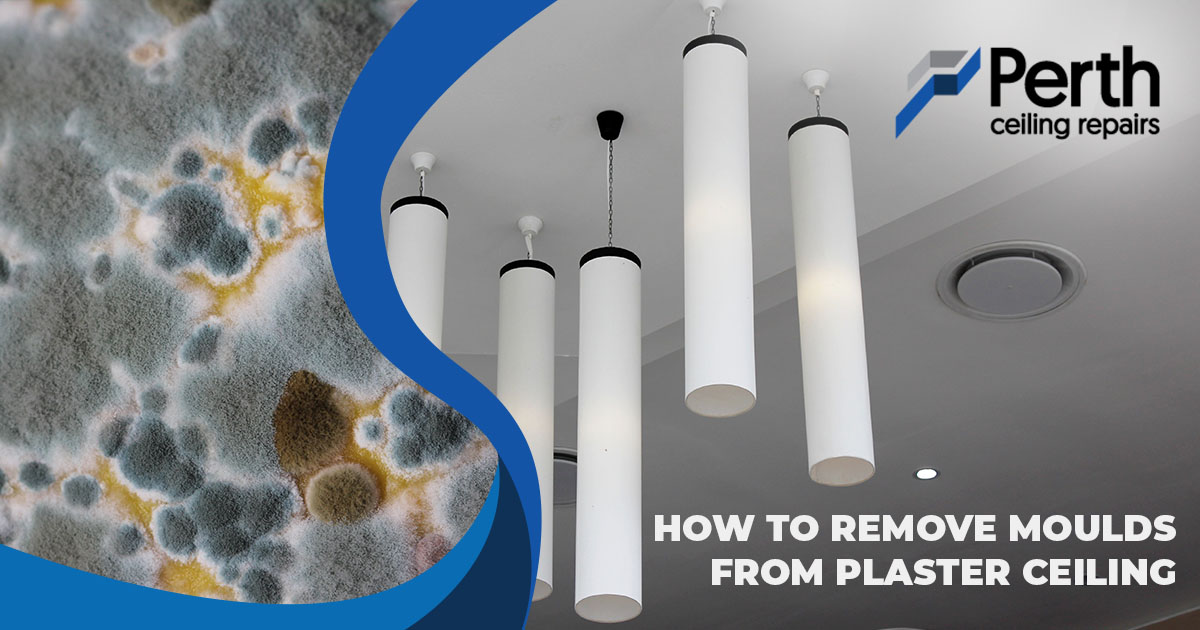
Having a beautiful, neat, and spotless house is an ideal goal that many of us would like to achieve. Even though keeping our home clean is not always easy, it is possible if we know how to maintain it properly. Besides keeping the house clean, many want our home to be a place where we can relax and take a break from the busy humdrum of work life, and a place to nourish our souls and body.
We don’t want to live in a place that makes us sick. That is why we need to maintain the cleanliness of our house. When you barely clean and maintain your home, mould and mildew can grow around the house.
This can negatively affect your health and make your home look unsightly. Several health issues are caused by mould. Some examples are asthma attacks, respiratory infections, sinus problems, rashes (dermatitis), blocked noses and itchy, red eyes.
How Mould Can Grow on the Plaster Ceiling
There are many reasons why mould may be growing in your house. Condensation, leakage, high humidity levels and poor ventilation can support the spread of mould in your home, especially on the plaster ceiling and walls. But if there is mould, you can’t just plaster the ceiling right away.
Improving ventilation might be the first step you could take to prevent those fungi from blackening your house and affecting your health. Poor air circulation in a house attracts mould growth. Leaving windows open during the day is a simple thing you can do to improve the ventilation, letting sunlight and fresh air enter your house.
If that doesn’t work, you can try several other methods to remove the mould from the plaster ceiling. Here, we will give you some tips on how to repel mould in your house.
Simple Methods to Remove Mould
It is essential to maintain the cleanliness of your plaster ceiling to make it more durable and mould-free. Rather than opting for plaster ceiling repair, regular cleaning is a better way to retain the original condition just removing the build-up of dirt or stains on your plaster ceiling. You can remove mould by performing the proper cleaning procedure, which we will outline below.
1. Removing Mould with Vinegar
Tools and materials:
- Ladder
- Spray bottle
- White distilled vinegar
- Plain water
- Small brush
- Several clean and soft cloths
Cleaning Steps:
- Pour the vinegar into the empty spray bottle
- Spray the vinegar on the mould and stains until they look damp and let it sit for an hour
- Soak the cloth in water and wipe away the mould
- Use the brush to scrub the hardened stains and fungi
- After the surface is clean, dab the area with another clean cloth
- Leave a window open to help dry the cleaned area
2. Removing Moulds with Bleach
Tools and materials:
- Ladder
- Water
- Bleach (chlorine bleach recommended)
- Bucket
- Several clean and soft cloths
- Gloves
- Goggles
- Mask to cover your nose and mouth
Cleaning Steps:
- Open the windows for good air circulation, preventing you inhale the harsh fumes of bleach too much
- Put on gloves, goggles, and a mask
- Mix the bleach and water in the bucket (1 bleach:10 water)
- Dip the tip of one cloth into the solution you have made and gently squeeze it
- Wipe the mould and stains with the cloth
- If the cloth gets dry, dip it into the solution again and repeat the steps until the mould and stains are completely removed
- If the solution gets too dirty, remake it and use a new clean cloth
- Press and dab the cleaned area with a new dry cloth
Plaster ceiling maintenance is an essential part of keeping your house clean. Removing mould, dirt and stains on the plaster ceiling and walls will help prevent the need for repair. However, if you detect some serious damage happening, you should repair the plaster ceiling. Call us and we can help you right away.


